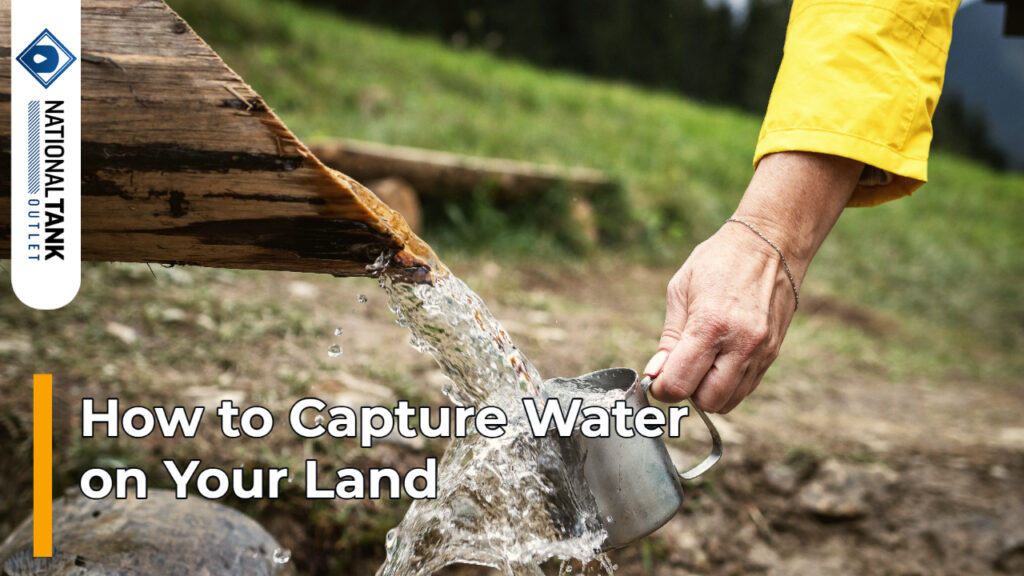
Looking to secure a reliable source of water on your land? Whether it’s to have water for livestock, plants, or to satisfy their own drinking water needs, many land and property owners seek to capture their own water for their personal uses.
Capturing water on your land can offer the security in knowing where your water comes from and ultimately what chemicals, minerals or additives are in it, if any. Collecting your own water can remove concerns in times of drought, especially if a large volume of water has been stockpiled, such as within a bulk volume vertical water tank. It can also provide self-sufficiency to those who seek it, giving freedom from having to purchase and rely on water from someone else such as a municipality or even a neighbor.
Top 4 Ways to Capture & Collect Water on a Property
Only sometimes are landowners lucky enough to have a natural source of water such as a lake, spring, or running water for use. Most often, landowners must rely on extra means to tap into an available water resource, and the water resources must be available for tapping into. Groundwater and rainwater are the most common alternative sources for water supply.
If looking to learn more about how to capture water on your land, we have researched and reviewed the top 4 ways to do this. These methods are tried and true, having been around throughout history but now with some modern advancements to better old techniques.
Option 1) Build a Well | Pump & Collect Groundwater
Building a well is the antiquated practice of digging down into the earth until reaching water that can be brought to the surface for use. The overall process has been improved upon and made significantly easier with modern technology, materials and equipment.
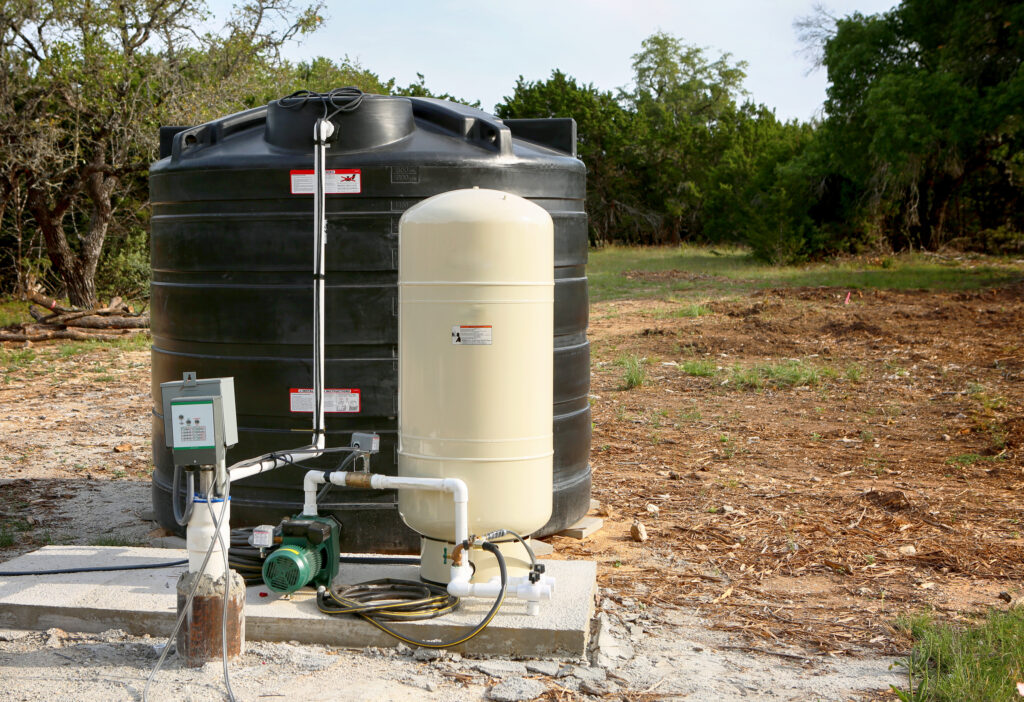
The water source for modern well installations is groundwater, often locked within what is known as an aquifer. The water pulled from a well can be very pure based on its location and underground depth. Well water purity can be affected by its proximity to large cities, industrial and manufacturing activities, extensive agriculture and livestock raising as well as waste treatment processes such as septic tanks. Again, this is all based on depth — the deeper the groundwater, the greater likelihood it will remain unaffected by human activities.
The modern well-drilling process can sometimes be self-performed given proper knowledge and equipment and if regional law codes allow and are followed. Well-building requires the installation of a well head, casing, a well screen at-depth, a pump, filtration as necessary, piping, a pressure tank and/or a water storage tank. Poly tanks can be used in groundwater well applications to increase on-hand water volumes and limit the frequency of well pump activation and associated wear-and-tear that can lead to burnout and replacement.
Option 2) Build a Rainwater Harvesting System | Capture Rainwater for Property Use
Increasing in popularity and use among homeowners, farmers, off-grid survivalists, and businesses, rainwater harvesting can be a significant way to tap into and collect an available water source. Rainwater harvesting can also be used in well and/or groundwater recharge when rainwater is intentionally diverted to a well or into the ground to increase the amount of water that reaches an aquifer rather than to vegetation or is lost to evaporation. Compared to a groundwater well, putting in a rainwater harvesting system can often be cheaper than the cost of drilling a new well.
Rainwater harvesting is the practice of using a dedicated structure, commonly a roof, with an angled surface that will take incoming rainfall and divert it to plumbing. From there it gets channeled to pre-tank filters, then to a rainwater collection tank where it can then be further treated or filtered depending on its intended use.
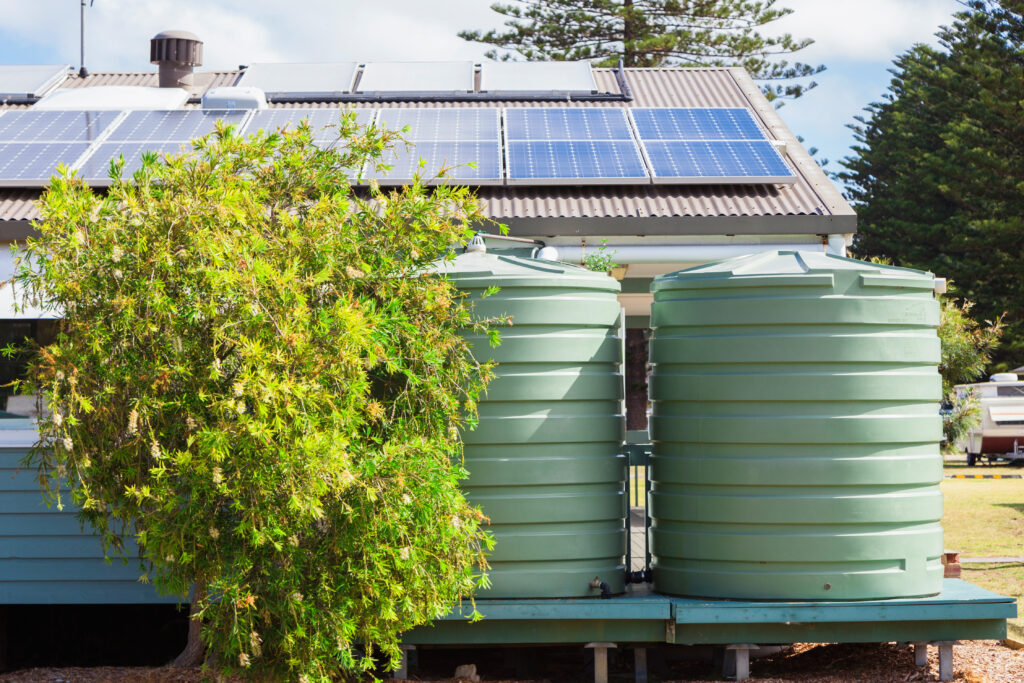
Rainwater systems can be designed to provide all the water that a property needs for use in irrigation, by appliances, for working equipment use, or even for food and drinking water use. This will depend on such factors as how much rainfall your geographic area will receive, the size of your collection area and rainwater harvest volume, and an appropriately sized rain tank.
To demonstrate how much water can be captured, a 1000 square foot roof can collect around 600 gallons of rainwater from a single inch of rain.
At its core, rainwater harvesting is another antiquated process that has undergone modern refining and advancements. Rather than earthen materials, such as clay, or simple metals, such as iron, bronze, and copper, that can easily break or contaminate, we now have modern refined metals of steel and synthetic plastic materials with much greater durability as well as purity.
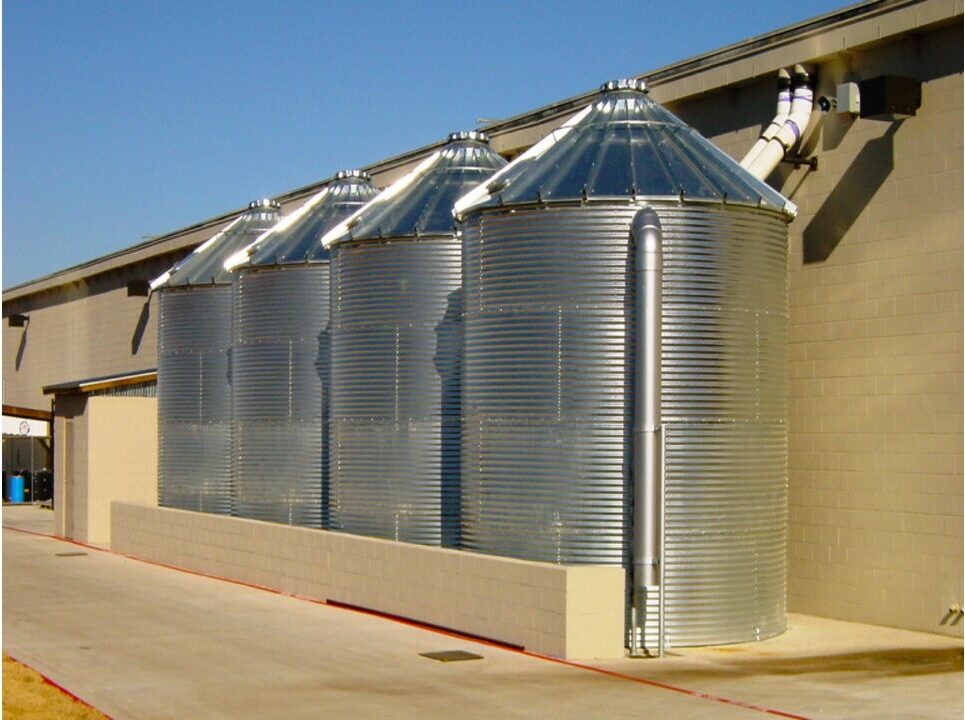
And rather than cleaning through boiling or cheesecloth and woodfire ash methods, we now have multi-stage filtration, membrane purification, chemical treatments, as well as UV light systems that can purify rainwater to a level approved for human consumption. For more on common rainwater harvesting practice, components and accessories, see our list of fully detailed articles.
Option 3) Build a Reservoir | Capture Rainwater and/or Groundwater in Bulk
A water collection reservoir is in effect a human-made pond. The option of building a personal reservoir has become a more popular, fairly modern practice due to advancements in machinery and engineering know-how. Reservoir building is the practice of moving earth and digging to build a wide circumference hole with any necessary earthen embankments to assist in water retention.

Reservoirs are commonly filled by digging deep enough to encounter groundwater or over time by rainwater. Both instances, however, require the right conditions for a reservoir to be successful. Some areas may not have shallow enough groundwater or enough rain to support reservoir formation. Alternative methods for filling can be tapping into a nearby creek or even a natural spring, given local regulations approve of such a practice.
Reservoirs are ideal and most used to provide drinking water for livestock but can also be connected for use in other applications. A water pump and plumbing can pump and deliver water from the reservoir to an end point use or to a water storage tank to be held and used at a different location, such as a home or in agriculture. Reservoir water collection systems can have their water filtered and purified to provide water that is clean enough for human consumption.
Option 4) Tap a Natural Resource | Running, Standing & Spring Water
Few landowners are so fortunate as to have a naturally occurring water source located on their property. Running water, standing water and spring water are all considered natural sources that can be tapped into for a property owner’s needs.
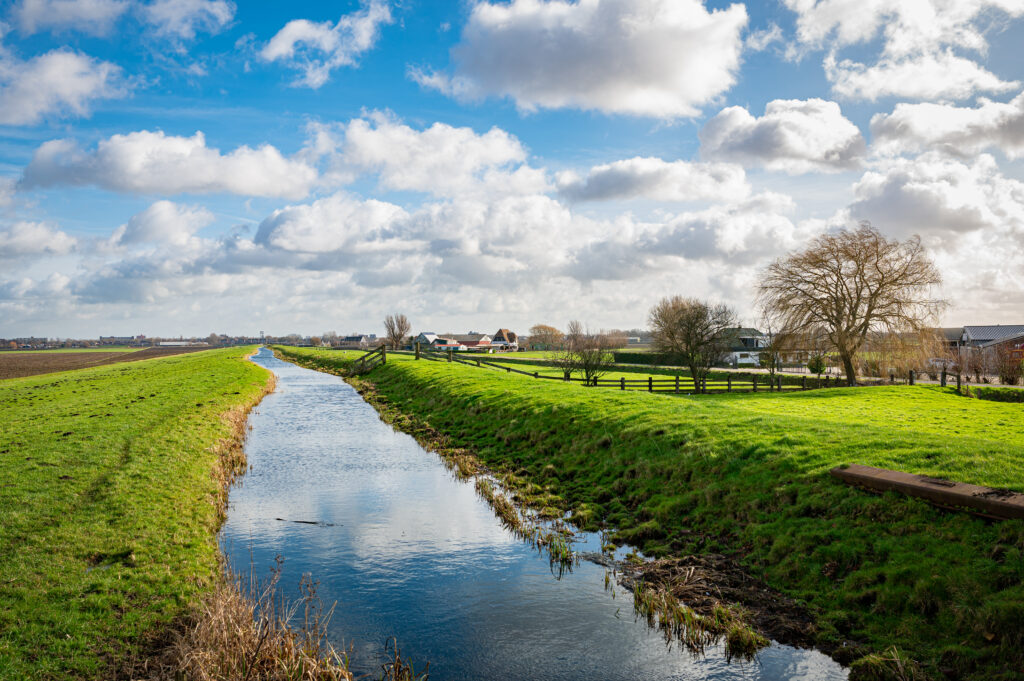
Running water, as in rivers and creeks, can be diverted into a reservoir or simply pumped out using a water pump and plenty of pipe. Lakes and ponds can also have water removed via pumps and plumbing. Natural springs can require more effort and actual development of the spring prior to pumping away the water for use or storage.
Except in the case of spring water, (although sometimes here too) these water sources will likely benefit from filtration and purification. Cleaning of these sources is recommended, if not law required, prior to human consumption and use. All scenarios make excellent choices for the treatment and long term storage of water in a bulk volume storage tank.
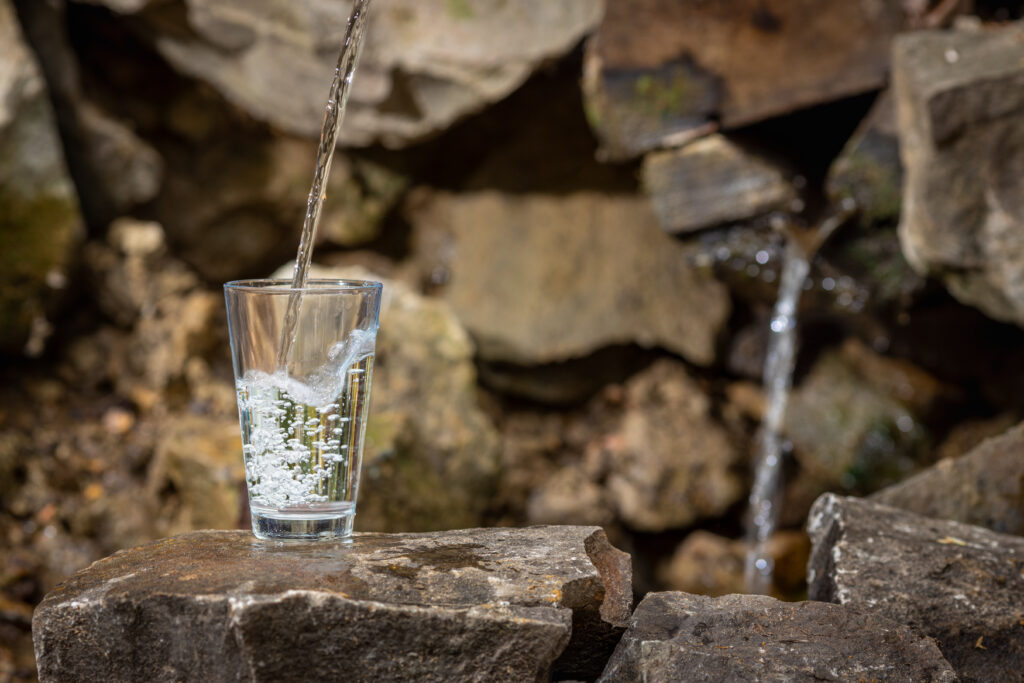
Takeaway | How to Capture Water on Your Land
Building or developing your own efficient water source can be personally rewarding, cost effective and provide comfort in knowing the water you need is secured. It can also be an excellent way to store up large volumes of water to have on hand for use when it’s needed. In all cases, ensuring your selected option is in full compliance with local regulations and law requirements is a must.
Bulk water storage tanks made from modern materials offer a durable, rust proof, corrosion resistant, and research-proven healthy option for long term water storage. Polyethylene water tanks are ideal for holding water up to 20,000 gallons. For larger volumes up to 100,000 gallons, galvanized steel water tanks are the way to go.
If you are collecting water on your property and storing it, sometimes the growth of algae can be a problem. If so, we have an article on 10 ways to reduce algae in your water tank. If the groundwater well option is your choice, consider our article on using bulk water storage tanks for well water.
If you have any other questions, comments, needs or concerns, never hesitate to reach out to us. By phone, email, message or chat, our team is always ready to hear from you and help.